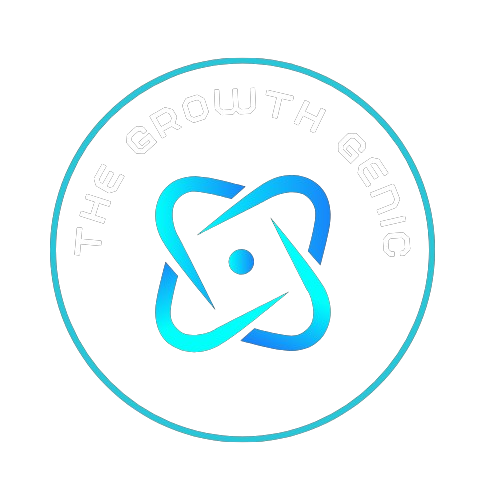Why Sales Demos Shape Buying Decisions
Sales demos have become a defining point in how buyers decide whether a product fits their needs, making sales demo training a vital investment for any organization. When prospects watch a live demo, they gain clarity about what a product can actually do, which immediately influences trust and confidence. Buyers often rely on these demonstrations to visualize what their daily workflow could look like with the product in place. This is why companies with well-trained demo teams consistently see better conversion rates compared to teams that rely solely on slide decks or verbal pitches. A successful demo can transform curiosity into commitment by helping buyers connect with the product on a practical level. Teams that invest in improving their demo delivery often outperform competitors because they communicate value with more accuracy and impact. When the experience is engaging, tailored, and executed with skill, the demo becomes a turning point in the decision-making process.
Understanding the Core Purpose of Effective Sales Demo Training
Sales demo training goes far beyond learning how to click through a product dashboard or present features. Its real objective is to develop the mindset and skills required to guide prospects through a buying journey. This training strengthens the ability to highlight benefits instead of drowning the audience in technical details. It also helps sellers shape conversations that reflect the customer’s goals, not just the product’s capabilities. When sales professionals understand how to position value, every demo becomes a meaningful interaction instead of a basic walkthrough. This training sharpens communication, builds confidence, and ensures sellers can adapt their flow when unexpected questions arise. As a result, every demo feels more like a collaborative exploration than a one-way presentation.
Essential Skills Every Sales Professional Must Master
Story-Driven Presentation Skills
One of the strongest components of sales demo training is learning to tell a compelling story that makes the product’s features more relatable. A well-told narrative helps buyers imagine how the solution would work in their real environment. Story-driven techniques avoid feature dumping and focus on meaningful connections. When sellers use examples tied to the buyer’s actual challenges, the demo becomes much easier to follow. Stories also make complex concepts more digestible, particularly for audiences that are new to the product. This skill encourages sellers to position the product as a path to improvement rather than a set of functionalities. Buyers often remember stories long after the demo ends, making this technique extremely powerful.
Emotional Intelligence in Demo Delivery
Emotional intelligence plays a significant role in how well a demo resonates with an audience. During live interactions, sales professionals must interpret body language, facial expressions, or even silence to adjust the flow accordingly. This adaptability makes the demo feel personalized and thoughtful. When sellers recognize hesitation or confusion, emotional intelligence enables them to pause, clarify, or shift examples. This responsiveness improves engagement and demonstrates genuine customer care. Emotionally intelligent demo delivery also helps maintain a positive, encouraging tone throughout the session. When prospects feel understood, they become more open to exploring deeper levels of the product.
Objection Handling with Confidence
Objections during a demo are common, and sales demo training teaches sellers how to respond without losing momentum. Confident responses show buyers that concerns are natural and manageable. Techniques such as reframing an objection as an opportunity help maintain a constructive dialogue. Skilled professionals avoid becoming defensive and instead focus on giving clarity. This approach strengthens trust and keeps the conversation moving toward solutions rather than barriers. Effective objection handling also reassures prospects that the seller truly understands the product from all angles. The way objections are treated often determines whether a prospect stays engaged or disengages.
Technical Fluency Without Overcomplicating
A key part of demo performance is knowing how to present technical details in a simple, understandable way. Sales demo training prepares sellers to break down complex features so that buyers quickly grasp their relevance. Prospects appreciate clarity, especially when the product involves advanced functionality. When sellers can explain intricate workflows using real-world examples, they maintain credibility and connection. The goal is not to simplify the product but to translate it into language buyers understand. Strong technical fluency supports trust without overwhelming the audience. Balancing depth and simplicity is one of the hallmarks of an effective demo specialist.
Structuring a Persuasive and Memorable Sales Demo
A well-structured demo keeps prospects engaged because it follows a flow that aligns with how people process information. Beginning with a compelling hook immediately captures attention and sets the tone for the rest of the presentation. Focusing on benefits before features helps buyers understand why certain details matter. Storytelling throughout the process provides a sense of context and keeps the demo relatable. Including smaller interactive moments also encourages participation, especially when showing complex capabilities. When the demo ends with a confident call to action, prospects know exactly what next steps to take. A strong structure increases clarity, momentum, and emotional engagement.
Tools and Technologies That Enhance Sales Demo Training
Modern software tools have significantly improved how teams learn and deliver better demos. Platforms that allow interactive walkthroughs give sellers opportunities to rehearse in realistic environments. Training systems with simulation features help teams practice scenarios they may encounter with live prospects. Analytics-based demo software provides performance insights, allowing sellers to refine their delivery. These technologies make training more consistent across teams and ensure everyone follows best practices. They also create measurable improvement, which helps leaders assess training effectiveness. With the right tools, even remote teams can maintain high-quality demo performance.
Overcoming Common Mistakes Sales Teams Make During Demos
Avoiding Feature Dumping
One of the most frequent mistakes in demo delivery is presenting too many features without connecting them to buyer needs. This overwhelms prospects and leads to confusion rather than clarity. Sales demo training teaches professionals to focus on relevance, not volume. Avoiding this trap ensures that the demo feels purposeful instead of scattered. When buyers hear information tailored to them, the experience becomes more meaningful. This approach also reduces cognitive fatigue, helping buyers stay engaged longer. A focused demo creates a stronger path toward decision-making.
Preparing for Diverse Buyer Personas
Different audiences require different approaches, and overlooking buyer personas is another common pitfall. A technical audience might want deeper walkthroughs, while executives prefer high-level benefit-driven narratives. Sales demo training ensures sellers learn how to adapt quickly. Preparation for personas helps avoid mismatched presentations that reduce effectiveness. A flexible approach allows sellers to adjust in real time depending on the reactions of the audience. When demos reflect the prospect’s context and language, they feel more personalized. This adaptability improves overall persuasion.
Training Methods That Deliver Stronger Demo Results
Training methods such as layered role-playing give sellers the chance to practice different complexity levels. Shadowing top performers provides real-world exposure to polished techniques. Script refinement workshops help teams focus on messaging, transitions, and storytelling flow. Video-based review sessions allow sellers to observe their habits and correct weak points. These methods combine skill-building with accountability, producing better results. Continuous reinforcement ensures the skills do not fade over time. When these techniques are integrated into regular training cycles, demo quality improves significantly.
Creating a Demo Experience That Feels Tailored and Customer-Centric
A customer-centric demo begins with understanding motivations, challenges, and goals. Sales demo training encourages professionals to ask relevant discovery questions before presenting. Tailoring the walkthrough based on real customer scenarios keeps the demo focused. Using examples that match the customer’s industry, workflow, or pain points makes the experience feel thoughtful. Buyers appreciate seeing how the product relates directly to their world. Personalized demos create stronger emotional engagement and better decision alignment. When prospects feel seen and understood, loyalty increases naturally.
How Sales Leaders Can Build a Culture of Demo Excellence
Sales leaders play a significant role in shaping demo performance across teams. They must provide consistent coaching, guidance, and measurable expectations. Strong leaders encourage practice sessions and make demo refinement part of the team’s rhythm. They also promote cross-department collaboration to ensure sellers have updated product knowledge. Metrics-driven leadership helps track performance and identify training gaps. Leaders who celebrate progress reinforce positive behavior and skill growth. A culture built on improvement naturally produces better demo outcomes.
Real Metrics That Determine Demo Success
Measuring demo success requires more than counting deals closed; it involves analyzing key engagement signals. Metrics such as time spent on each feature reveal which parts of the demo resonate most. Follow-through patterns after a demo offer clues about buyer interest. Feedback collected from prospects also helps highlight areas needing improvement. Monitoring these indicators ensures that demo strategies evolve with customer expectations. A data-driven approach leads to more accurate coaching and stronger team performance. Over time, these metrics build a clear picture of what makes a demo truly effective.
Frequently Asked Questions
What is the main goal of sales demo training?
The main goal is to equip sellers with the skills to deliver engaging, customer-focused demonstrations that highlight value rather than just features.
How long does it take to master demo delivery?
Mastery varies, but consistent practice paired with structured training can lead to strong improvement within a few weeks.
Should demo scripts be standardized or personalized?
Scripts should offer structure but still allow room for customization based on the specific audience and their needs.
How can introverted sales professionals excel in demos?
Introverted sellers often excel because they naturally listen well, prepare thoroughly, and approach demos with thoughtful communication.
Does demo training differ between B2B and B2C environments?
Yes, B2B demos tend to be more complex and benefit-heavy, while B2C demos typically focus on ease, practicality, and emotional appeal.
What tools are most effective for practicing demos remotely?
Platforms with simulation features, video role-play tools, and demo analytics systems offer the best support for remote training.
Takeaway
Sales demo training strengthens the ability to communicate value with precision, clarity, and confidence. When sellers learn to structure their demos thoughtfully, understand their audience, and adapt through emotional intelligence, the entire buying experience becomes more powerful. Modern tools, ongoing practice, and strong leadership contribute to developing consistent demo excellence across teams. Every interaction becomes an opportunity to inspire trust and guide customers toward meaningful decisions. High-performing teams know that demos are not just product walkthroughs but carefully crafted experiences. Investing in these skills leads to stronger relationships and higher conversions. With the right training approach, every demo can deliver impact that moves buyers forward.











